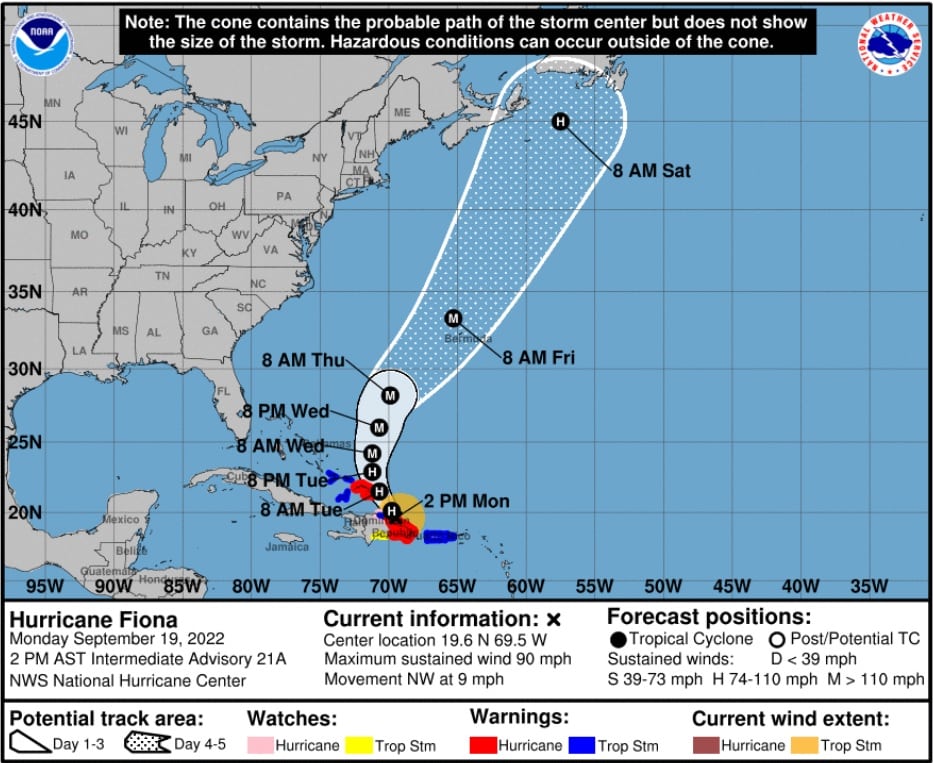Hurricane Fiona Deals Another Blow to Puerto Rico’s Power Grid

Hurricane Fiona made landfall on Puerto Rico on Sept. 18 as a category 1 hurricane with torrential rain and damaging winds – at 80 miles an hour – leading to an island-wide power outage, as the electric system experienced several transmission line disruptions. The storm hit nearly five years after Hurricane Maria destroyed 80 percent of Puerto Rico’s transmission and distribution infrastructure and left 1.5 million customers without electricity.
On Sept. 19, LUMA Energy, which operates the island’s power grid, reported that its crews are taking critical actions to respond to the outage following the hurricane-force winds, unrelenting rains and severe flooding. On Sept. 18, U.S. President Joe Biden declared that an emergency exists in Puerto Rico and ordered federal assistance to supplement response efforts.
The 2017 hurricanes that battered the power grid served as a wakeup call, prompting regulators to seek ways to harness renewables and provide emergency backup generation through microgrids. The Puerto Rico Energy Bureau has advanced several measures to overhaul the grid for reliability and resilience. The bureau adopted regulations in 2018 to encourage microgrids to facilitate quicker power restoration and to integrate more renewable energy supplies to strengthen the system’s resilience to disruptions. In 2019, the bureau directed Puerto Rico Electric Power Authority (PREPA), the government-owned agency that supplies electricity to the island, to revise its 20-year resource plan for the transformation of the island’s power generation system to expand the deployment of solar and storage (EnerKnol Insights). More recently, in August, the bureau adopted a cost-effectiveness framework to assess the benefits and costs of future demand response and energy efficiency programs.
PREPA is the largest public electric utility by customer count in the U.S. and owns the transmission and distribution system on the island, as well as approximately 86 percent of generation assets. LUMA operates the island’s transmission and distribution system. Grid infrastructure, including generation facilities, continues to be rebuilt after sustaining damage caused by Hurricanes Irma and Maria in 2017 and an earthquake and aftershocks in early 2020.
The U.S. Energy Department is working with government partners to promote new actions that will speed up efforts to strengthen the electrical resilience of Puerto Rico (EnerKnol’s Visual Primer). In February, the department signed a memorandum of understanding with the Department of Homeland Security, Housing and Urban Development, in conjunction with Puerto Rico to promote new actions that will speed up efforts to strengthen the electrical resilience of the island. The agreement initiates the “Puerto Rico Grid Resiliency and Transitions to 100% Renewable Energy,” PR100, study. The study is an important tool aimed at improving the reliability of Puerto Rico’s electrical system through the use of 100 percent renewable energy. Support from federal agencies has facilitated the planning and preparation for the execution of more than $12 billion in federal funds destined for the recovery and modernization of the electrical grid of the island. Since the island was hit by hurricanes Irma and Maria in September 2017, the department has extended support to aid in the recovery of Puerto Rico’s energy system, providing training and technical assistance for the construction of an electrical system with greater resilience against further interruptions.
The aftermath of Hurricanes Irma, Harvey, and Maria that wrecked homes, businesses, and infrastructure across the U.S. in 2017 exposed the vulnerability of centralized electric grids, prompting calls for sustained investments in the nation’s electricity infrastructure.
EnerKnol Pulses like this one are powered by the EnerKnol Platform—the first comprehensive database for real-time energy policy tracking. Sign up for a free trial below for access to key regulatory data and deep industry insights across the energy spectrum.
ACCESS FREE TRIAL


